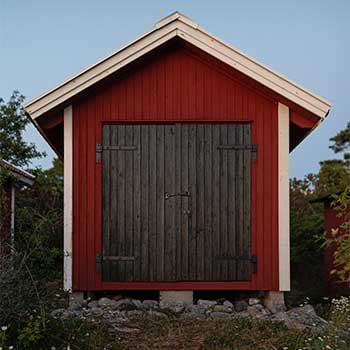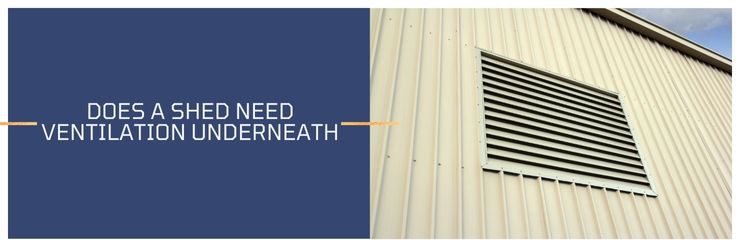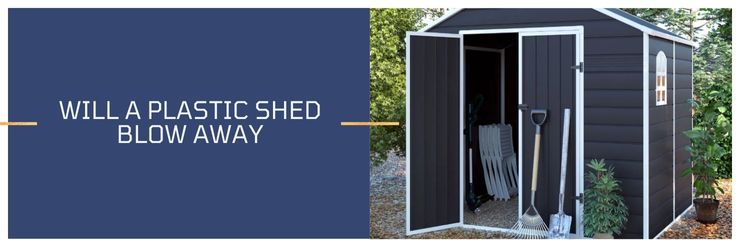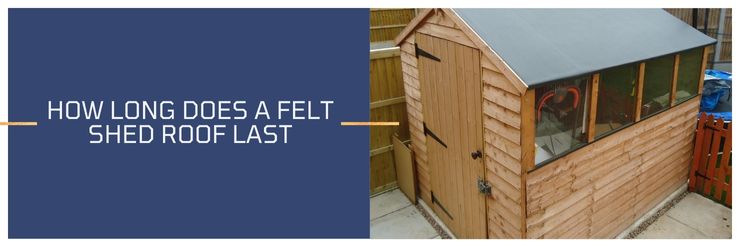Ventilation is important in any building, to ensure that the air quality inside is good and that the structure stays healthy. But what about a shed? Does a shed need ventilation underneath as well?
Yes, a shed needs ventilation underneath. Sheds, like any other building, can suffer from dampness and condensation.
This is especially true if the shed is built on ground that is not entirely level, as water can run underneath the shed and cause problems.
Ventilation helps to prevent this by allowing air to circulate underneath the shed and dry out any moisture that may be present.
It is also important for preventing the growth of mold and mildew, which can cause health problems for people who are exposed to them. Read on to find out more about this question!
Does a Shed Need Ventilation Underneath
One thing you might not think about when deciding to add a shed to your property is whether or not it needs ventilation underneath.

The answer to this question depends on a few factors. First, what material is the shed made out of? If it’s made out of wood, then it’s important to have some ventilation to prevent the wood from rot.
Second, what are you using the shed for? If you’re using it to store flammable materials, then it’s important to have ventilation to prevent a fire from starting.
Finally, what is the climate like where you live? If it’s very humid, ventilation will help prevent mold and mildew from growing.
So, as you can see, there are a few things to consider when deciding if your shed needs ventilation underneath.
However, in general, it’s always best to err on the side of caution and provide some ventilation just in case.
Why Ventilate Underneath Your Shed
A lot of people ask me why it’s necessary to ventilate the space underneath their shed. After all, there’s not much going on down there- just a few gardening tools and perhaps some stored boxes.
However, there are a few good reasons to ensure that the area beneath your shed is well-ventilated.
First of all, it helps to prevent dampness and mold growth. By allowing fresh air to circulate, you can help to keep the space beneath your shed dry and clean.
Secondly, ventilation helps to reduce the risk of condensation buildup. When warm air meets cold surfaces, it can cause water droplets to form- and over time, these droplets can lead to serious structural damage.
Lastly, ventilation helps to keep the temperature underneath your shed more consistent. By allowing hot air to escape in summer and cold air to circulate in winter, you can help to protect your stored belongings from extreme temperatures.
So next time you’re considering whether or not to ventilate the space beneath your shed, remember that it’s not just about preventing musty odors- it’s about protecting your investment.
Will Ventilation Underneath a Shed Help With Moisture
If you have a shed, you may be wondering if you need to provide ventilation underneath it. After all, moisture can be a problem in any enclosed space.
There are a few things to consider when deciding whether or not to ventilate your shed. First, think about the climate where you live.

If you live in an area with high humidity, you may want to ventilate your shed to help prevent moisture buildup.
Second, consider the materials that your shed is made of. If your shed is made of wood, it will be more susceptible to moisture damage than a shed made of metal or plastic. Ventilating your shed can help reduce the risk of moisture damage to your shed.
Third, think about what you will be storing in your shed. If you plan on storing sensitive items in your shed, such as electronics or stored paintings, you may want to ventilate your shed to protect these items from moisture.
Finally, consider the amount of ventilation that you need. If you only need a small amount of ventilation, you can provide it with a few small vents. If you need more ventilation, you may want to install a larger vent or even a fan.
Ventilating your shed can help reduce the risk of moisture damage and protect your belongings from moisture.
However, you should consider the climate and materials of your shed when deciding whether or not to ventilate it.
Conclusion
Does a shed need ventilation underneath? A shed needs ventilation underneath in order to prevent moisture damage and the growth of mold and mildew.
This is important for the health of people who are exposed to these substances. If you are building a shed, be sure to include vents or other means of allowing air circulation underneath it. This will help keep your shed in good condition and protect your family’s health.





